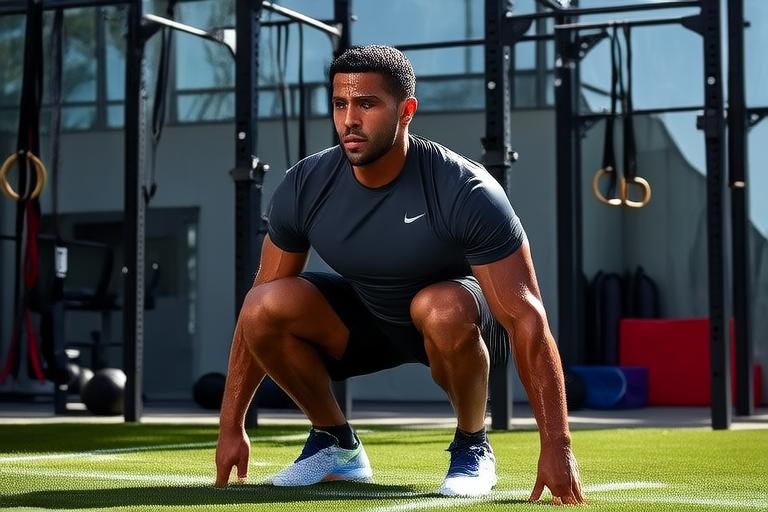Boosting Performance: Essential Sports Science and Safety Precautions
In today’s competitive world of athletics, the pursuit of peak performance is relentless. Athletes, coaches, and support staff are constantly seeking ways to enhance physical capabilities while maintaining health and preventing injuries. Sports science plays a pivotal role in this quest, offering a structured approach to understanding the physiological and psychological factors that influence athletic performance. Concurrently, prioritizing safety measures ensures that athletes can train and compete at their best without compromising their well-being. This article explores the essential aspects of sports science and safety precautions that are crucial for boosting athletic performance.
Nutrition: The Fuel for Performance
Proper nutrition is foundational to athletic success. An athlete’s diet must provide sufficient energy, promote muscle repair and growth, and support overall health. Carbohydrates, proteins, and fats are the primary macronutrients required for energy production and tissue repair. Carbohydrates are particularly important for endurance events, providing the necessary fuel for prolonged physical activity. Proteins are vital for muscle repair and growth, especially after intense workouts. Healthy fats contribute to hormone regulation and long-term energy storage.
Hydration is equally critical, as dehydration can lead to decreased endurance, impaired concentration, and increased risk of injury. Athletes should aim to maintain optimal hydration levels before, during, and after exercise. Electrolyte replacement is also important to prevent imbalances that can affect nerve and muscle function.
Hydration: The Lifeline of Athletic Performance
Water is more than just a necessity; it’s a lifeline for athletes. Dehydration can lead to reduced endurance, increased fatigue, and decreased cognitive function. Proper hydration is crucial for maintaining blood volume, regulating body temperature, and ensuring efficient delivery of nutrients to muscles. For athletes, hydration strategies should be tailored to individual needs based on factors such as sweat rate, climate, and duration of activity.
During prolonged exercise, athletes should consume fluids containing electrolytes and carbohydrates to replace lost fluids and provide additional energy. It’s important to start hydrating before exercise and continue throughout, rather than waiting until thirst sets in. Post-exercise hydration focuses on replacing fluid losses and restoring electrolyte balance, which may involve consuming sports drinks or foods rich in sodium and potassium.
Recovery Techniques: Enhancing Recovery for Peak Performance
Effective recovery techniques are indispensable for optimizing athletic performance. Active recovery, such as light exercise or stretching, helps to reduce muscle stiffness, improve circulation, and promote faster recovery. Passive recovery methods, like sleep and relaxation, allow the body to heal and restore energy reserves. Sleep, in particular, is crucial for muscle repair, memory consolidation, and overall health.
Compression garments can help reduce swelling and speed up recovery by improving circulation. Cryotherapy and contrast water therapy are other popular recovery techniques that can alleviate muscle soreness and inflammation. Additionally, proper nutrition and hydration play significant roles in recovery, ensuring that the body has the resources needed to repair and rebuild tissues.
Training Methods: Building Strength and Endurance
Effective training methods are central to enhancing athletic performance. Periodization involves dividing the training year into distinct phases, each with specific goals. For example, a preparatory phase focuses on building a solid base of fitness, while a competitive phase emphasizes peak performance and competition preparation. Interval training, characterized by alternating high-intensity efforts with periods of rest or low-intensity activity, is highly effective for improving cardiovascular fitness and endurance.
Strength training is another critical component, contributing to muscle mass, strength, and power. Resistance training, using weights or bodyweight exercises, targets specific muscle groups and can be tailored to meet individual needs. Plyometric exercises, involving explosive movements, enhance power and agility. Flexibility training, through practices like yoga or dynamic stretching, improves range of motion and reduces the risk of injury.
Safety Precautions: Protecting Against Injuries
Injury prevention is paramount in sports, as injuries can sideline athletes and compromise their careers. Proper warm-up and cool-down routines are fundamental to injury prevention. Warm-ups increase blood flow to muscles, raise core body temperature, and prepare the body for the upcoming activity. Cool-downs facilitate the return to resting state, promoting recovery and reducing muscle soreness.
The use of appropriate protective gear is essential, especially in contact sports. Helmets, mouthguards, padding, and other equipment protect against head injuries, concussions, and other traumatic injuries. Regular maintenance and proper fitting of equipment are also crucial. Coaches and trainers should ensure that athletes are properly instructed on the correct use of equipment to minimize the risk of misuse.
Proper technique is another key aspect of injury prevention. Athletes should be coached on the correct form for various activities to avoid undue stress on joints and muscles. Regular assessment and feedback can help identify areas for improvement and address potential issues before they become serious problems.
Conclusion: Integrating Sports Science and Safety for Optimal Performance
The integration of sports science and safety precautions is essential for achieving optimal athletic performance while ensuring the well-being of athletes. A balanced approach that incorporates proper nutrition, hydration, recovery techniques, and training methods provides the foundation for peak performance. Simultaneously, prioritizing safety through injury prevention strategies, proper equipment use, and adherence to warm-up and cool-down routines protects athletes from harm.
By embracing the principles of sports science and adhering to safety guidelines, athletes can push their limits and reach new heights in their respective fields. Coaches, trainers, and medical professionals play a crucial role in supporting athletes on this journey, ensuring that they have the knowledge, tools, and guidance necessary to excel safely and sustainably.










